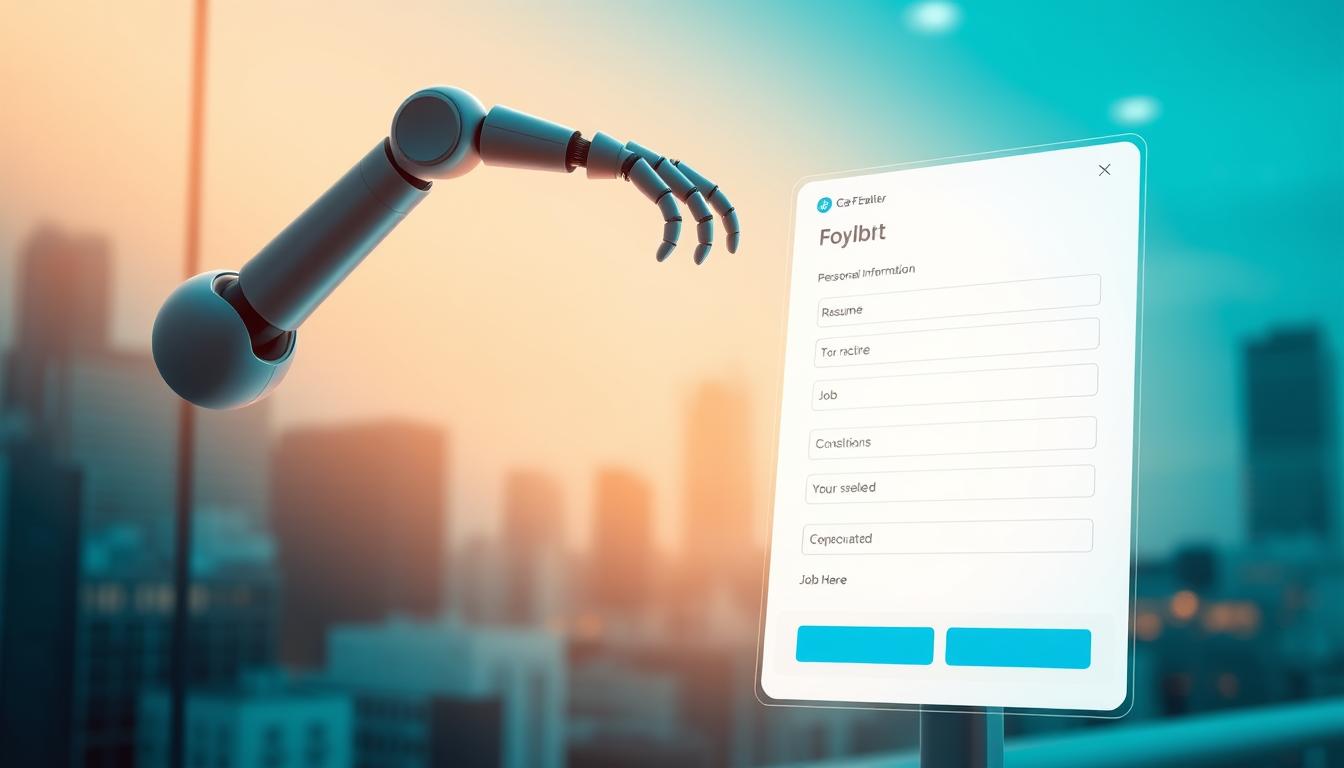Getting your dream job as an interior designer means having a resume that really stands out. It’s not just about listing where you’ve worked; it’s about showing off your unique style, your practical skills, and how you bring spaces to life. This guide will walk you through creating an amazing Interior Designer Resume Examples for 2025 that gets noticed.
Key Takeaways
- Make sure your resume clearly shows off your design style and how you solve problems.
- Use numbers and facts to prove your successes, like how much you saved a client or how many projects you finished.
- Tailor your resume for each job you apply for, highlighting skills and experiences that match what they’re looking for.
- Don’t forget to include a link to your online portfolio; it’s super important for showing your work.
- Proofread everything carefully to catch any errors; a clean resume shows attention to detail.
1. Interior Designer
So, you’re aiming for a general Interior Designer role? Awesome! Let’s break down what a killer resume looks like for that position in 2025. It’s all about showing off your creativity, technical skills, and ability to manage projects from start to finish.
First things first, your resume needs to grab attention fast. Recruiters often spend just a few seconds reviewing each application, so make sure your key qualifications are front and center. Think about highlighting your design aesthetic, software proficiency, and any successful projects you’ve led.
- Showcase your design style: Are you a minimalist? A maximalist? Make it clear!
- Quantify your achievements: Instead of saying "Managed projects," say "Managed 5+ projects with budgets up to $50,000, resulting in 15% client satisfaction increase."
- Tailor to the job: Don’t just send the same resume everywhere. Adjust it to match the specific requirements of each position.
A strong interior designer resume emphasizes both creative flair and project management skills. It’s about demonstrating that you can not only envision beautiful spaces but also bring them to life on time and within budget.
Consider using a modern resume template to make a great first impression. You can find many resume templates online. Also, remember to use action verbs to describe your experience. For example, use "Designed," "Managed," and "Created" instead of weaker verbs like "Responsible for." Finally, don’t forget to proofread! Even a small typo can make a big difference. You can also use tools like RoboApply to help you build your resume, generate cover letters, and auto-apply for jobs.
2. Interior Design Assistant
Being an Interior Design Assistant is all about supporting the lead designers. You’re helping with everything from coming up with design ideas to making sure projects go smoothly and clients are happy. Your resume needs to show you’ve been involved in successful projects, that you know your way around design software, and that you’re a team player. Think about highlighting your color theory skills, your ability to do 3D modeling, and how well you communicate. Also, mention times you’ve met deadlines and solved problems effectively – it shows you’re a valuable part of the team.
Basically, you want to show you’re not just following instructions, but that you’re actively contributing to the design process and helping to make things happen.
Here’s what to focus on:
- Showcase your software skills. List programs like AutoCAD, Revit, or SketchUp. Even better, give examples of how you’ve used them on projects.
- Highlight your organizational skills. Interior design projects have a lot of moving parts. Show that you can keep things on track.
- Emphasize your communication skills. You’ll be talking to clients, vendors, and other designers. Make sure they know you can communicate clearly and professionally.
Think of your resume as a way to show off your potential. You want to show them that you’re ready to take on more responsibility and grow as a designer. You can find free resume samples online to help you get started.
3. Entry Level Interior Designer

So, you’re fresh out of school or making a career change? An entry-level interior designer resume needs to highlight your potential. It’s all about showing what you can do, even without tons of experience. Let’s break it down.
First, focus on your education. Did you kill it in design software classes? Did you win any awards? Put that front and center. Next, think about any relevant projects, even if they were for school or personal. Did you redesign your friend’s apartment? Include it! It shows initiative and passion. Finally, tailor your resume to each job. Read the description carefully and use their keywords. This shows you understand what they’re looking for. Let’s get into the details.
An entry-level resume is about showcasing potential and eagerness to learn.
Here’s how to make your resume shine:
- Highlight your education: List your degree, relevant coursework, and any academic achievements. Don’t bury this information; make it prominent.
- Showcase your skills: Even if you lack professional experience, you likely have skills like CAD software proficiency, space planning abilities, or knowledge of design principles. Make a dedicated skills section.
- Include relevant projects: Did you work on any design projects during your studies or as a hobby? Detail them, emphasizing your role and the outcomes. This is your chance to show, not just tell.
Remember, your resume is your first impression. Make it count by focusing on what you can bring to the table, even without extensive experience. Show your passion, your skills, and your willingness to learn, and you’ll be well on your way to landing that first job.
Think about adding a portfolio link. Even if it’s just a simple website with a few projects, it lets employers see your work. Also, don’t forget a cover letter. Use it to explain why you’re interested in the job and how your skills match the company’s needs. It’s a chance to add some personality and show your enthusiasm. Make sure to review interior designer objective examples to help you craft a compelling resume objective.
Remember to proofread everything! Typos and grammatical errors make you look unprofessional. Ask a friend or family member to read it over before you submit it. A fresh pair of eyes can catch mistakes you might have missed. Good luck with your job search!
4. Keywords for Interior Design Resumes

It’s super important to sprinkle the right keywords throughout your interior design resume. These words act like signals, telling potential employers that you have the skills and experience they’re looking for. Think of it as speaking their language! Let’s break down how to find and use these keywords effectively.
Finding the Right Keywords
Start by carefully reading the job descriptions for the positions you’re interested in. Pay close attention to the skills and qualifications they emphasize. These are your keywords! Also, don’t forget to check out industry-related websites and publications to see what skills are currently trending. You can also use tools that analyze job descriptions to identify the most important skills. Our list of top resume skills and keywords has analyzed over a million job descriptions to give you a headstart.
Here are some common keywords for interior design resumes:
- Interior Design
- Space Planning
- AutoCAD
- SketchUp
- Project Management
Weaving Keywords Into Your Resume
Don’t just stuff your resume with keywords! That can make it sound unnatural and spammy. Instead, try to incorporate them smoothly into your skills section and work experience descriptions. For example, instead of saying "I know AutoCAD," you could say "Proficient in AutoCAD for creating detailed design plans and 3D renderings." This shows that you not only have the skill but also know how to use it in a practical setting. Remember to showcase your design process and problem-solving skills.
Skills Section Example
Here’s an example of how you might structure your skills section:
- Technical Skills: AutoCAD, Revit, SketchUp, Adobe Creative Suite (Photoshop, InDesign, Illustrator), V-Ray
- Design Skills: Space Planning, Furniture Selection, Color Coordination, Sustainable Design, 3D Modeling
- Project Management Skills: Budget Management, Timeline Management, Client Communication, Vendor Coordination
Remember to tailor your keywords to each specific job you’re applying for. The more closely your resume matches the job description, the better your chances of getting an interview!
Action Verbs are Key
Using strong action verbs can really make your resume stand out. Instead of just listing your responsibilities, focus on your accomplishments and use verbs that highlight your skills and experience. For example, instead of saying "Responsible for project management," try "Managed project budgets and timelines, ensuring on-time and on-budget delivery." Here are a few more examples:
- Designed
- Created
- Developed
- Conceptualized
- Implemented
5. Interior Design Resume Tips

So, you’re putting together your interior design resume? Awesome! Here are some tips I’ve picked up that should help you make it shine. It’s not just about listing what you’ve done; it’s about showing how well you’ve done it.
- Showcase your design skills and style. Hiring managers want to see what you’re capable of, so make sure to include a link to your online portfolio or attach a PDF with your best projects. Think of it as your visual handshake.
- Highlight your interior design specialties. Interior design is a broad field, so showcase your specific areas of expertise to stand out to hiring managers. For example, you could say you specialize in sustainable design, hospitality design, or healthcare design. Tailor your specialties to the job description. If the company is looking for a residential designer, emphasize your experience in that area. Use a Targeted Resume tool to check if your resume has the right keywords for the job.
- Include a mix of projects and accomplishments. A strong interior designer resume should feature a diverse array of projects, from residential to commercial spaces. Detail your accomplishments in these projects, emphasizing any awards or recognition you’ve received, and quantify your success using metrics (e.g., increased client satisfaction by 20%).
Make sure all the information you provide is accurate and not exaggerated. Lying on your resume is never advisable. Many employers verify resume details during reference checks before making a final offer.
To write an interior designer CV, consider your goals, list core qualifications, and detail your work experiences. Also, don’t forget to write a complementary cover letter to help aspiring professionals.
6. Action Verbs to Use
A strong verb can turn a flat statement into a clear achievement; use present-tense verbs to sharpen each line. For a larger pool, check strong action verbs.
Pick verbs that show action and results.
| Category | Examples |
|---|---|
| Concept | conceptualized, ideated, envisioned |
| Management | coordinated, organized, supervised |
| Technical | rendered, drafted, detailed |
| Collaboration | partnered, consulted, liaised |
| Implementation | implemented, executed, launched |
Leading with verbs keeps your resume dynamic and straight to the point.
Tips:
- Start with what you did: “designed interior layouts” instead of “responsible for design.”
- Add numbers when you can: “organized 5 client presentations” reads sharper.
- Mirror wording from the job ad to breeze past the screening bots.
Once you’ve fine-tuned your wording, compare your statements to examples in insurance agent resumes.
7. Related Design Resumes

It’s always a good idea to check out resumes from similar fields. You might find some inspiration or discover skills you hadn’t considered highlighting. Plus, seeing how others present their experience can give you an edge.
Civil Engineer
Civil engineering and interior design might seem worlds apart, but there’s some overlap. Both require problem-solving skills, attention to detail, and an understanding of spatial relationships. A civil engineer resume often highlights project management and technical skills, which can be useful to see. For example, if you’ve managed large-scale projects, seeing how a civil engineer presents their project management experience can give you ideas. Check out a civil engineer resume to see how they structure their skills and experience.
Outside Sales
Okay, hear me out. Sales skills are essential for interior designers. You need to sell your ideas to clients, manage budgets, and negotiate with vendors. An outside sales resume is all about showcasing communication, persuasion, and relationship-building skills. These are all highly transferable to interior design. Look at how they quantify their achievements and use action verbs. You can learn a lot from an outside sales resume about presenting your soft skills and accomplishments.
Structural Engineer
Structural engineers focus on the integrity and safety of buildings. While you’re not designing the structure itself, understanding structural elements is important in interior design. A structural engineer resume will emphasize technical knowledge, problem-solving, and adherence to regulations. Seeing how they present their technical skills and certifications can be helpful. Plus, they often have to collaborate with architects and designers, so their resume might give you insight into what they look for in a design partner.
Looking at related resumes isn’t about copying, it’s about getting ideas and seeing how other professionals present their skills and experience. It can help you identify areas where you can improve your own resume and make it stand out.
Here are some key takeaways:
- Identify transferable skills: Look for skills that are relevant to interior design, even if they’re presented in a different context.
- Quantify your achievements: See how others use numbers and data to demonstrate their impact.
- Use action verbs: Pay attention to the verbs they use to describe their responsibilities and accomplishments.
- Structure your resume effectively: Notice how they organize their sections and highlight key information.
Want to see more cool resume examples? Check out our website! We have tons of great ideas to help you make your resume stand out. You can even use our special tool to make your own awesome resume.
Wrapping Things Up
So, there you have it. Getting your interior designer resume just right can feel like a big job, but it’s totally doable. Think of it as designing your own career path. You want to show off your best work, make sure it’s easy to read, and really speak to what the company is looking for. Take your time, go over it a few times, and don’t be afraid to get some fresh eyes on it. A good resume opens doors, so make yours count!
Frequently Asked Questions
What does an interior designer actually do?
An interior designer makes indoor spaces both pretty and useful. They pick out colors, furniture, and decorations to match what clients want, making sure everything looks good and works well. They also handle things like planning the space, picking materials, and working with builders.
Do I need a special degree to be an interior designer?
You don’t always need a special degree, but most places want you to have at least a bachelor’s degree in design. Some states also require you to pass a test to become a certified interior designer. It helps to have a good eye for design and to be good at solving problems.
What makes a good interior designer resume?
A great resume for an interior designer should show off your creative skills and your ability to manage projects. Include details about your past projects, what you achieved, and any special design programs you know how to use. Make sure it looks clean and professional.
How can I make my resume strong if I’m new to interior design?
When you’re just starting out, focus on any design classes you’ve taken, school projects, or volunteer work where you used design skills. Mention any internships or part-time jobs, even if they weren’t full-on interior design, but showed you can work with people or manage tasks.
Should I include a portfolio with my resume?
Yes, you should definitely include a portfolio! Your portfolio is like a picture book of your best work. It lets potential employers see your style and what you can do. Make sure it’s easy to access, maybe with a link on your resume.
What kind of words should I use on my resume?
Use strong, active words like “designed,” “managed,” “created,” “planned,” and “coordinated.” These words show what you did and how you made things happen, making your resume more impactful.
What skills are important to put on an interior designer resume?
Highlight skills such as space planning, color theory, material selection, and knowledge of design software (like AutoCAD or SketchUp). Also, include soft skills like communication, problem-solving, and working well with others, because these are very important when dealing with clients.
Any other tips for making my resume stand out?
Keep your resume clear and easy to read. Use bullet points for your experience and achievements. Make sure there are no typos. And always change your resume a little bit for each job you apply for, so it matches what that specific company is looking for.


















